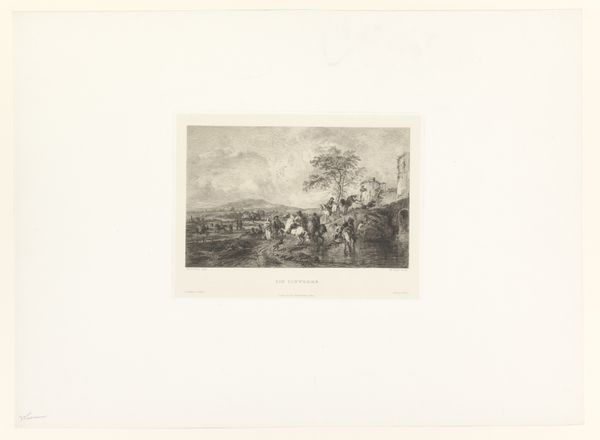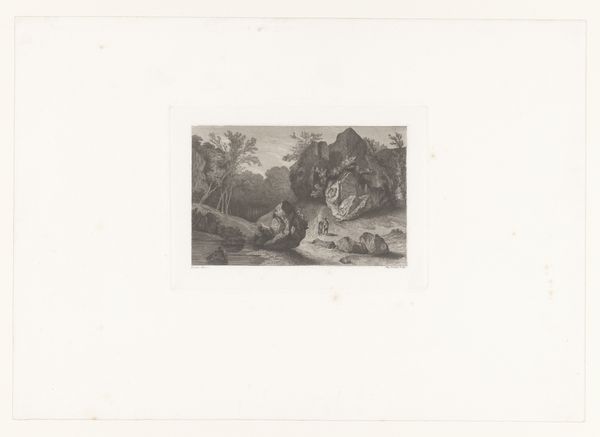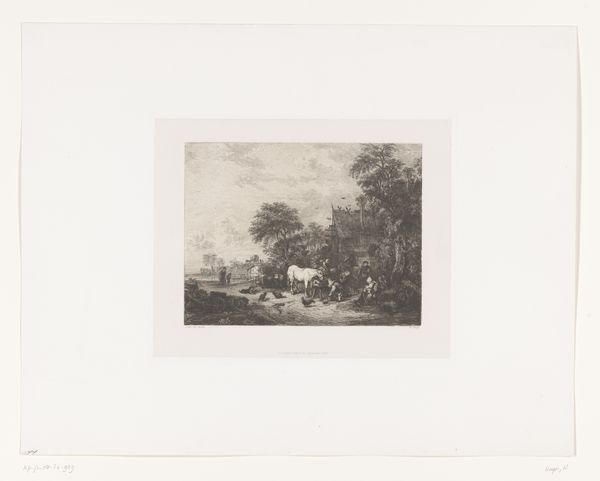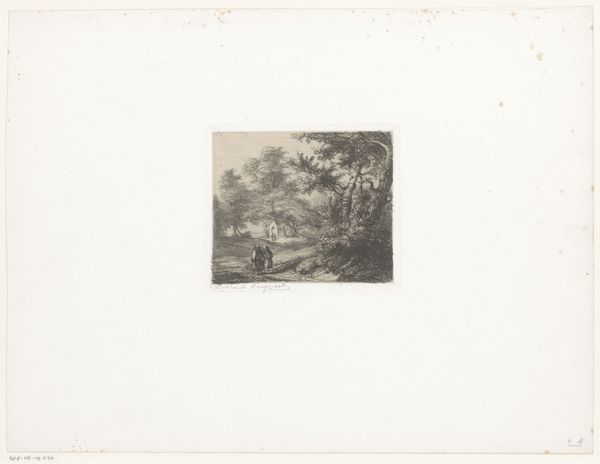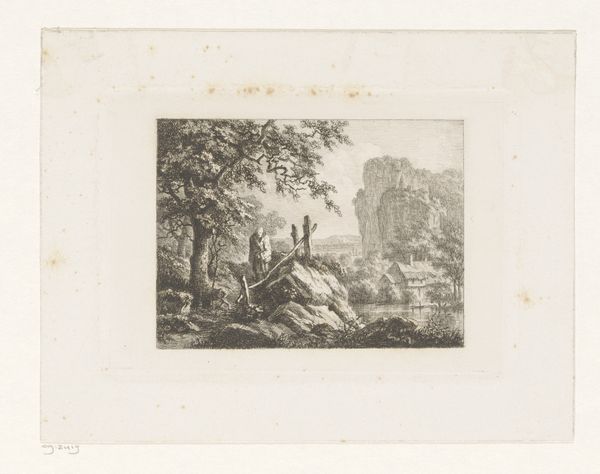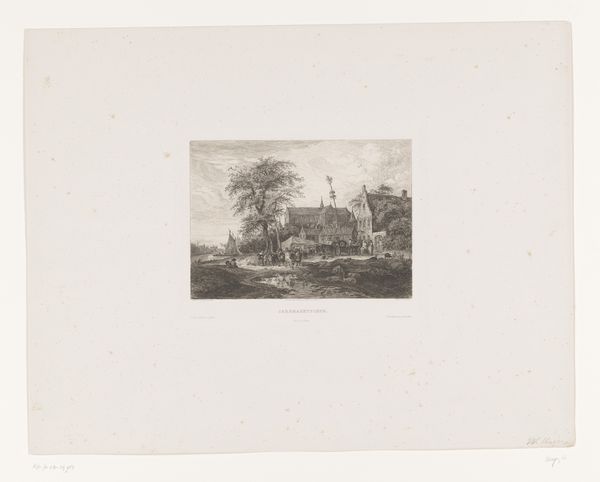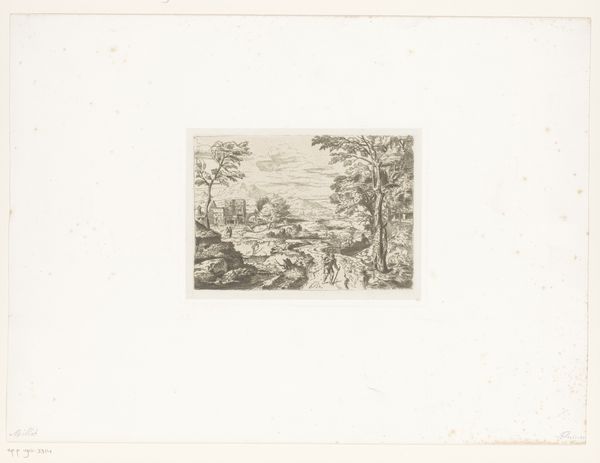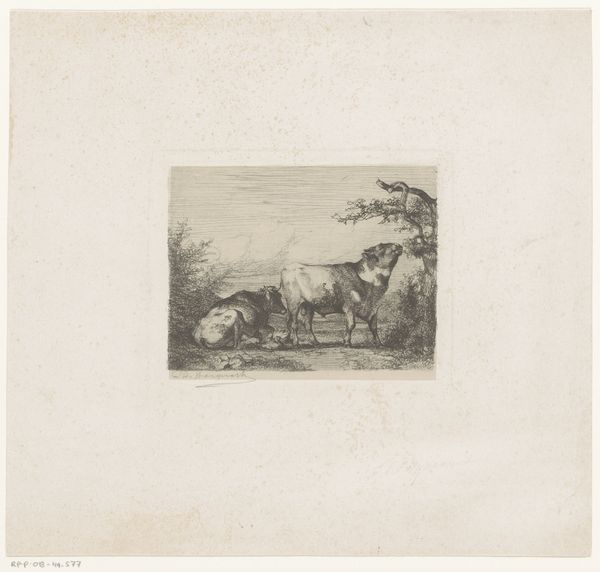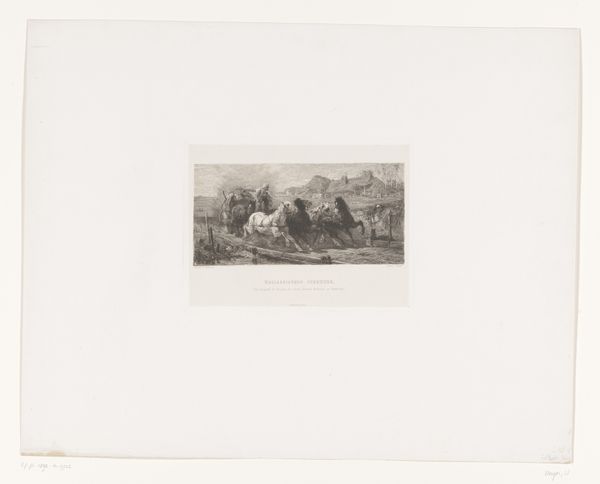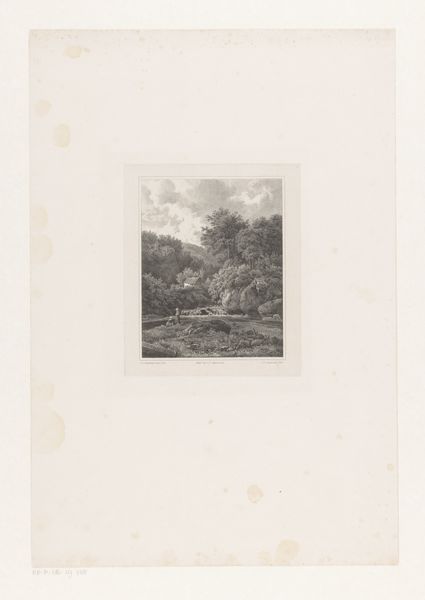
print, paper, engraving
#
ink paper printed
# print
#
landscape
#
paper
#
genre-painting
#
engraving
#
realism
Dimensions: height 220 mm, width 267 mm
Copyright: Rijks Museum: Open Domain
Editor: We're looking at "Flying Hawk and a Hen Surrounded by Chicks," an engraving by William Unger made between 1847 and 1889. It depicts a dramatic scene in a pastoral setting. What draws my eye is the stark contrast between the hunter and the vulnerable family below. How do you interpret this work? Curator: I see this print as deeply connected to its means of production and its place within a specific social context. Engraving, a reproductive process, allowed for wide distribution and consumption of imagery. This piece, therefore, transcends simply being an artistic expression; it becomes a commodity, reflecting and shaping societal views on nature and domesticity. Editor: That’s interesting. So, it’s not just about the birds themselves, but how the print-making process influenced its meaning? Curator: Exactly! Consider the labor involved: the engraver, the printer, and then the distribution networks. This entire system contributes to the artwork’s significance. The print aesthetic also bridges high art and craft, making this artwork accessible and commercialized in a completely new way. What elements point to social commentary of 19th century industrialization and consumer culture to you? Editor: Well, maybe the hawk symbolizes industrial forces encroaching on traditional rural life, with the hen and chicks representing vulnerability in the face of progress? And since it's a print, available to many, the artist seems to acknowledge a wide, burgeoning public with specific appetites. Curator: Precisely. We can examine the piece beyond aesthetics, and towards production and how materiality adds multiple interpretations. Editor: This changes my understanding entirely. It’s not just a picture; it’s a product of its time. Curator: Indeed. It urges us to consider the processes of its making and consumption and meaning within the social milieu. Editor: Thanks! Looking at art through a materialist lens really illuminates the connections between art, labor, and society.
Comments
No comments
Be the first to comment and join the conversation on the ultimate creative platform.
